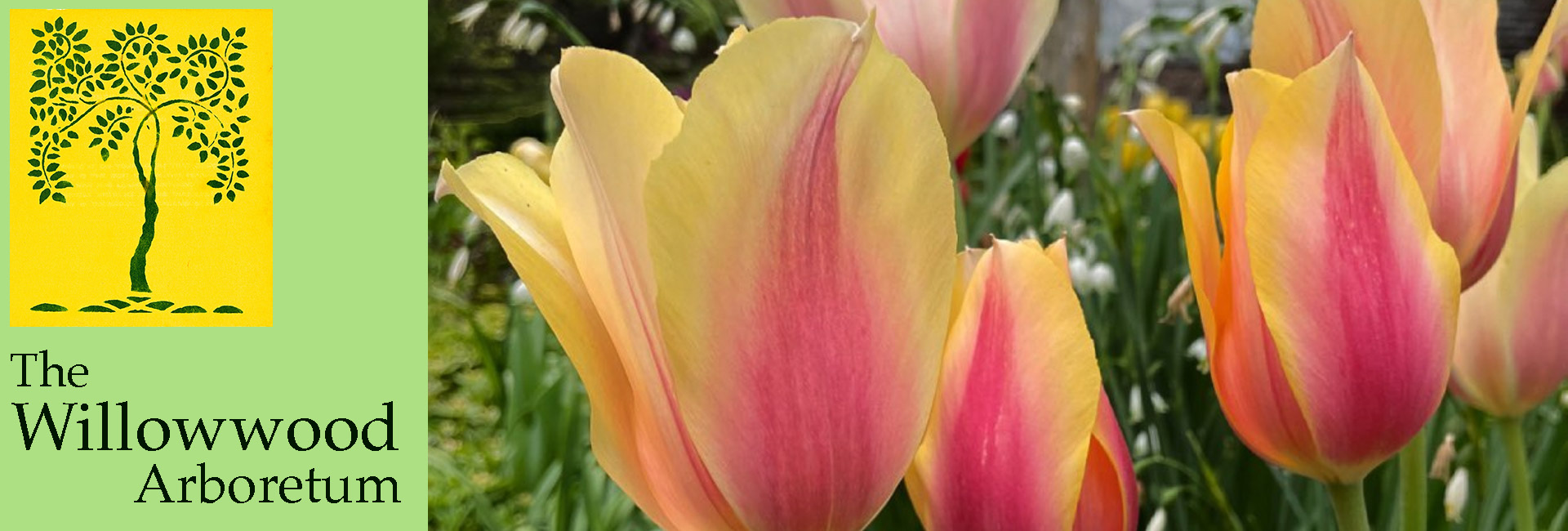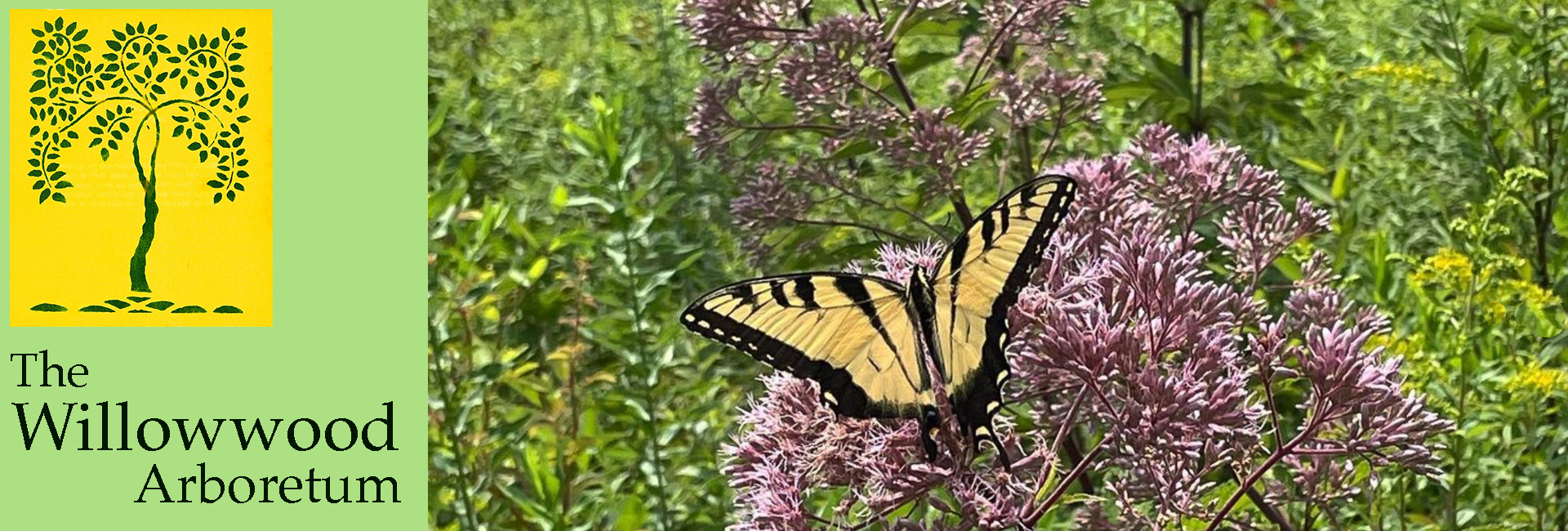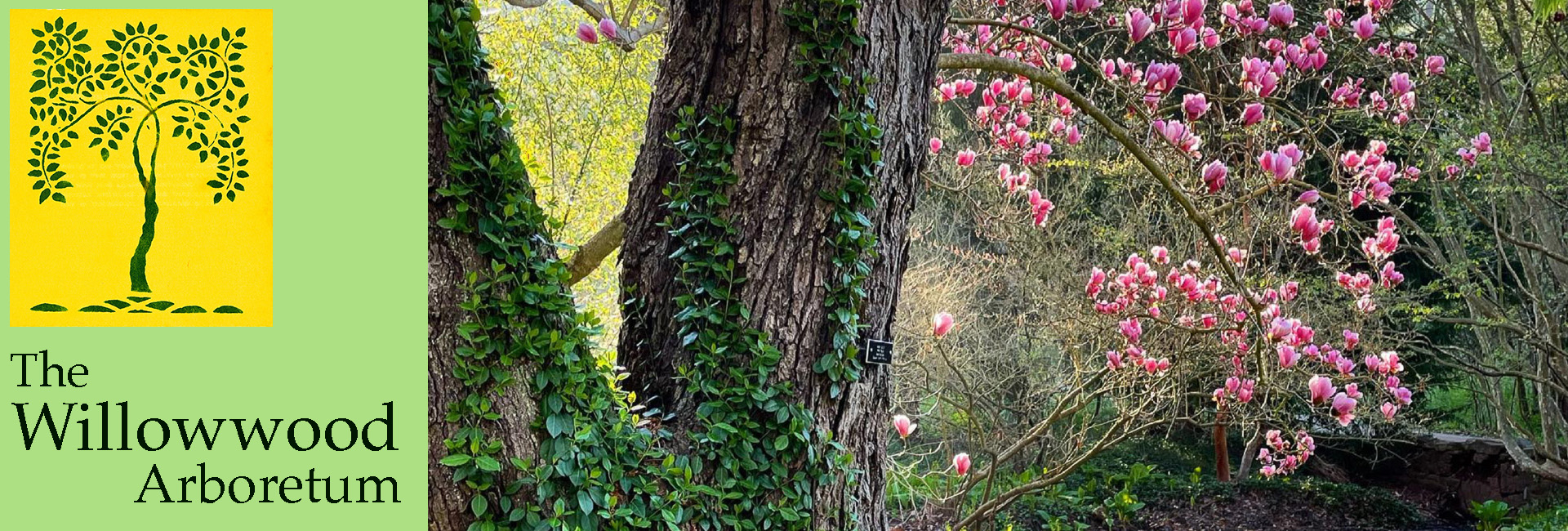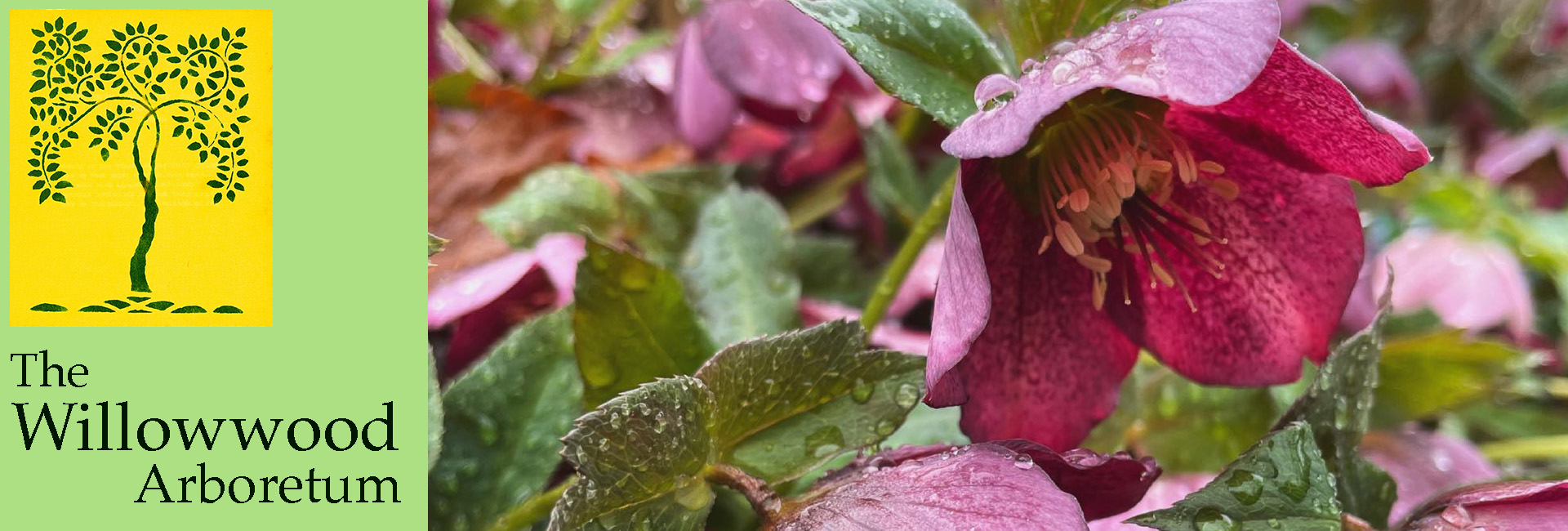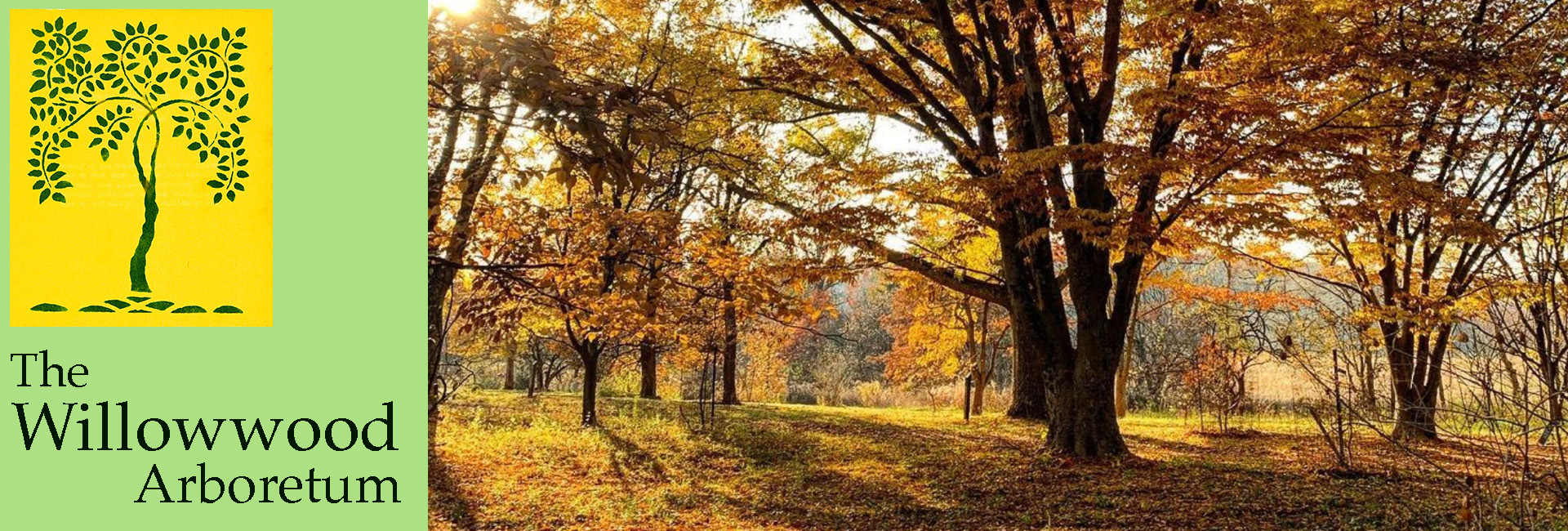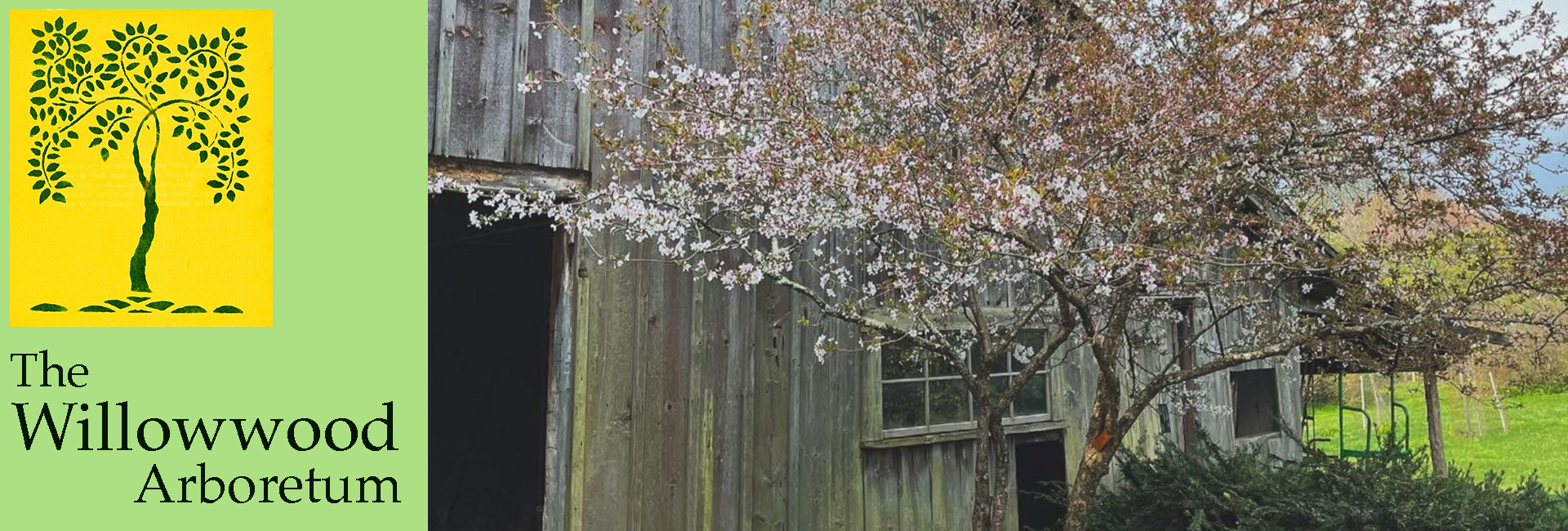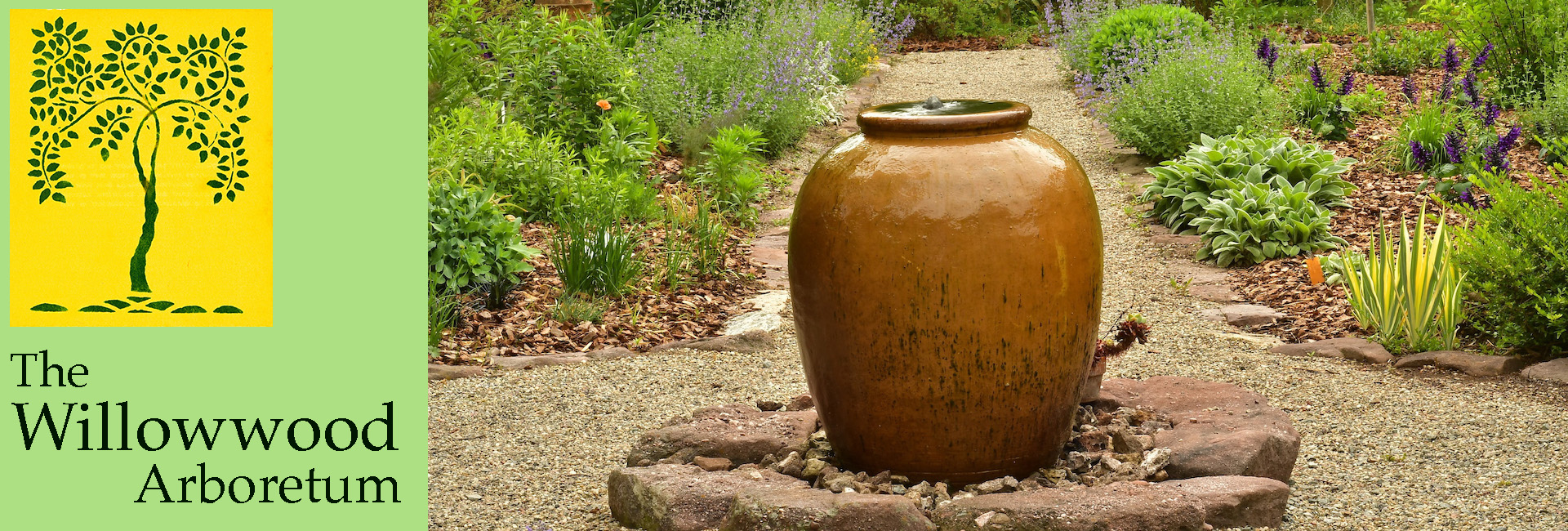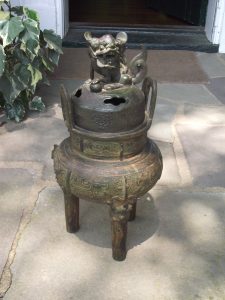Highlights from the Decorative Arts Collection
By Dr. Lesley Parness, Retired MCPC Superintendent for Horticulture Education
While it is certainly true that Henry and Robert Tubbs had a passion for plant collecting, that same passion extended to the decorative arts as well. Learn about a different Tubbs residence artifact in this and upcoming issues of the Willowwood Journal.
In this issue, we focus on FOO DOG INCENSE BURNER, Item number WW2004.12.31 A-C.
This 19th century bronze incense burner with a foo dog finial stands on a dark stained, tri-footed teak plinth. The Chinese ceremonial covered pot stands 21” high and is 11” in diameter. Cast in bronze, with hand-chased ornamentation, the outer surface bears a smoky patina from years of use. Smoke is expelled through the mouth and openings in the censer. Some of its traditional embellishments include the raised panel bas relief, a lavish mane, billowing tail, bared fangs, glaring eyes, and talon like feet.
Pictured here standing on the Tubbs residence porch, this piece usually resides in the Parlor on a low table adjacent to the door leading to the Library.
Incense in China is traditionally used in a wide range of cultural activities including religious ceremonies, ancestor veneration, traditional medicine and in daily life. Known as xiang, incense was used as early as 250 BC. Its use increased during the Han dynasty (206 BC – 220 AD) with greater trade and the availability of more fragrant materials. Incense was traditionally burned at the threshold of a home or business, before images and deities, in shrines, at home alters and at the main entrance to villages.
In Chinese art and secular life, incense and the utensils used in associated rituals are seen as metaphoric symbols, suggesting refinement and sophistication. The representation of the Foo Dog on this burner is typical of how the lion was viewed in ancient China. “Foo Dog” refers to any of the closely related dog breeds which resemble the Chinese guardian lions and hence are also called Lion Dogs. The animal was believed to have powerful mythic protective properties. Their appearance in Buddhist religious art in China is found as early as 208 BC, when it was believed that the Foo Lion was a protector of the Dharma, or Buddhist teachings.
How did the lion, which is not indigenous to China come to be known there? As Buddhism was spread from neighboring India to China by traveling Buddhist priests and monks, stories about stone lions guarding the entries to temples, monasteries and the palaces of kings were spread. Lions are indigenous to India and scholars believe that the depiction of the Foo Dog came about because Chinese sculptors combined lion-like imagery with that of Chinese native dogs.
Foo Dog Incense Burner is one of many Asian decorative art pieces amassed by Henry and Robert Tubbs. In both their garden and their home, the Tubbs brothers were drawn to Asian design sensibilities. We will explore this connection further in future columns.
